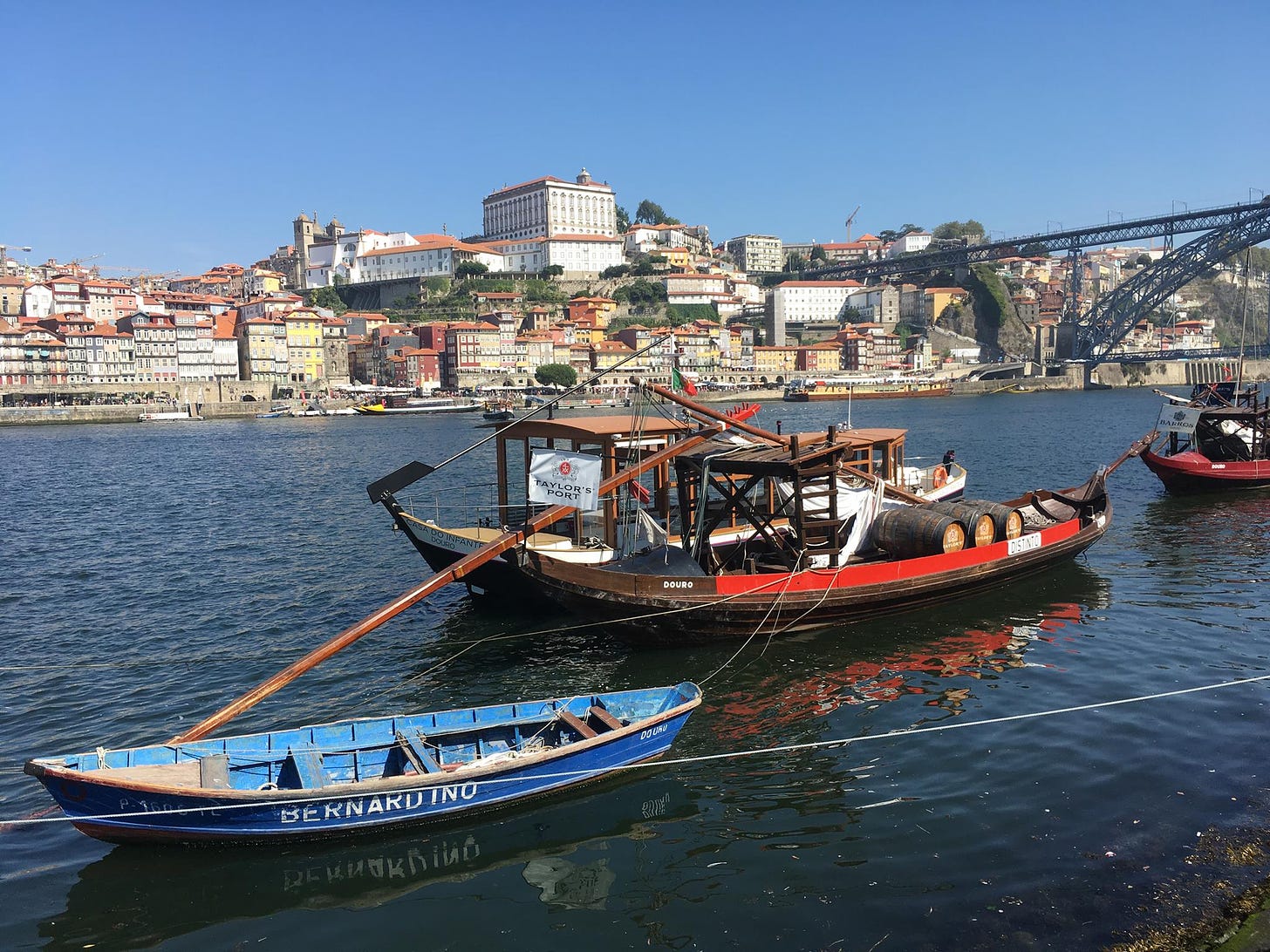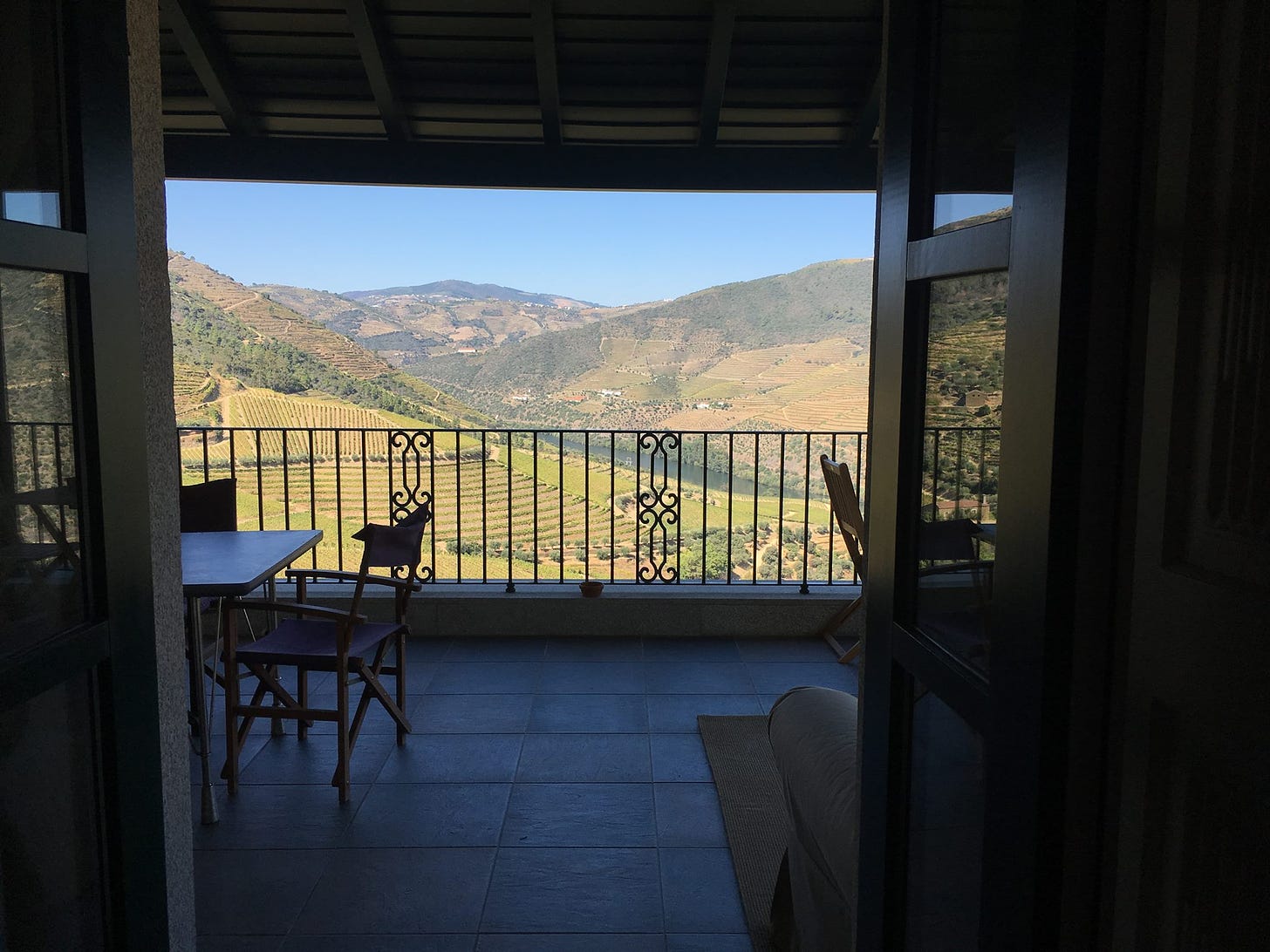Oporto: city of wine and stodgy food
More port this week with a trip to Oporto and the Douro valley, possibly the most beautiful wine region in the world.
After three days in Porto, the true reason for the ancient alliance between the English and the Portuguese dawned on me. Yes there’s wine and having a common enemy in the Spanish, but it’s really about a shared love of stodgy food. The city’s most famous dish is called a Francesinha, a sandwich stuffed full of steak, sausage and ham, covered in melted cheese and baked in a spicy beer sauce. With a fried egg on top. And it’s served with chips. Of course it is! It tastes like it was invented after rather too much herbal refreshment.
Forget any thoughts about a Mediterranean diet, the other classic local dishes are tripe stew and salt cod served dozens of ways (my favourite are the deep-fried croquettes stuffed with cheese from Casa Portuguesa do Pastel de Bacalhau.) The English originally brought the cod, caught on the Grand Banks, and exchanged it for wine. The Portuguese noted how enthusiastically the English drank the stuff: there is still a popular insult, bebabo Inglez, English drunk.
And that’s how it was for centuries, Porto was a working town based around wine, and the vast majority of the visitors were British. But now the world and his wife have woken up to the city’s charms. This is my third visit and, according to Richard Bowden from the Yeatman Hotel,“the city is rocking at the moment.” Why has it taken so long? It’s a stunning-looking place, built up the steep side of the valley leading down to the Douro river with bridges (one of them designed by Gustave Eiffel) linking Porto with Vila Nova de Gaia on the opposite bank. This is where the British built their warehouses so that they would be outside the jurisdiction of the city. All the old names are still there emblazoned above the old warehouses:Taylors, Fonseca, Croft, Dow etc. But they’ve been joined by bars and restaurants along the shore. The grungy city that I first visited in 2014 is fast disappearing.
It was the Yeatman Hotel which put Porto on the international tourist map when it opened in 2010. It was the brainchild of Adrian Bridge, CEO of the Fladgate partnership, which owns Taylor's, Fonseca, and Croft. The hotel has a two Michelin-starred restaurant but what our seven year old daughter loved most were the breakfasts: tables laden with cake, custard tarts, and bacon and eggs. Something for everyone. Afterwards she had fun running up and down the long Shining-style corridors. From the terrace you get the most splendid view of the sun setting over Porto, and from the infinity pool everyone tries to get the Instagram shot of the city taking in river, bridge, and collagen-enhanced pout.
At the moment the famous view is rather spoiled by the cranes working on Bridge’s latest project: €350 million museum of wine which is set to transform Vila Nova [I wrote this a few years ago. The World of Wine is now open]. It has already affected some of the old warehouses which are like working museums. The old Croft lodge which dates back to the 17th century is being turned into part of the new museum and all the wine is being moved out. I’d recommend visiting Taylor’s which has a brilliant visitor centre.
Port has been through some tough times. Many of the old names were bought by multinationals and quality deteriorated, but the wines are now better than ever. Sales by volume may be down (hence the switch to tourism) but the premium market is booming. In Porto they drink tawny port, wood-aged, mellow and pale in colour, drunk lightly chilled, as well as white port and tonic instead of a G&T. The table wines are now also excellent.
To get across the river you can take a boat, or cross at one of the bridges.The city has a modern tram and metro system but we spent two days walking fueled by ice cream (our daughter) and Port (my wife and I). The Fladgate empire continues on the other side of the river at the Infante Sagres hotel. It’s a Porto institution (Christian Seely from Quinta do Noval told me louchly, “I had one of my honeymoons there”) now returned to its former glory.
After two nights in Porto, we went up country to find the source of the wine. It would have taken early British merchants weeks to get there braving bandits, rapids and extremes of temperature. We took the train: a charming little number straight out of the 1960s. It trundled along slowly whilst we watched the scenery change from the lush vegetation of Porto to the dramatic sunbaked Douro valley.
It takes about an hour and half to Pinhão. I was expecting the station to be a sleepy one-donkey kind of place, but it was crammed with buses and umbrella-wielding Chinese tour parties. Luckily, our driver Manuel was waiting for us in an old Mercedes to whisk us up to Quinta da Gricha, owned by the Churchill Graham family. Very soon we were alone with only ancient pickup trucks ferrying grape pickers for company.
The weather was baking so on arrival we cooled off in the pool and then ate oranges and grapes straight off the trees. Our daughter befriended the vineyard dogs and went exploring. At night I got an idea of just how remote the quinta (estate in Portuguese) is. From the terrace there were almost no other lights on the hillside. Peace at last! That night we ate with the other guests, the inevitable salt cod (which I love, I am not complaining) and not even the doctor couple from the West Midlands complaining about Brexit could spoil the moment. With a glass of 20 Year Old Churchill tawny in my hand, I fell into a port-fuelled reverie.
If you're keen to try some port, here’s a round-up for paid subscribers.





I love it there so much. Staying at The Yeatman is our favorite indulgence when we go to Porto.
Nice piece Henry, thanks. After my recent first visit to Portugal I can concur on the heartiness of the food. And the salt cod!